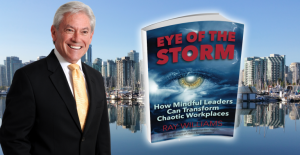By Ray Williams
August 27, 2019
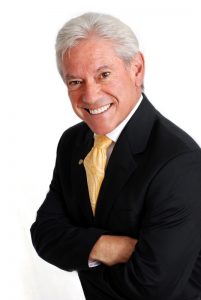
We have both myopic and conflicting views on how to deal with the millions of aging baby boomers.
We need to effectively deal with the following issues:
- Our concept and prejudices about aging.
- The impact of large numbers of people retiring from the workplace.
- The kind of medical and social support structures needed for an aging population.
The Statistics of Aging
The world’s population is aging. By 2050, the World Health Organization (WHO) estimates two billion people will be aged 60 years or older, up from 900 million in 2015. By 2030, Asia will be home to 60 per cent of the world’s over 65. In a study by the Urban Institute, The Aging Baby Boom: Implications for Employment and Training Programs,concludes that by 2050, the median age of population will be in the following countries: Japan-52, Italy-52, U.K.-43, Finland-46, the U.S. and Canada-42. In the European Union in the next 10 years, the number of workers 50-65 will increase 25% while the percent aged 20-30 will decrease by 20%. Over 1 million people ages 90 to 100 will be working in Japan by 2030.
By 2021, for he first time in history, the number of older people will outnumber the number of children younger than 5 years of age. The average life expectancy is expected to rise to 110 by 2030 in Japan and Germany are officially termed “super aged.” Four more countries—Greece, Finland, Spain and Canada,–are expected to enter the super aged category. According to the Global Age Watch Index, Norway has been nominated to be the most likely country to grow old out of 96 countries.
Currently, about 28% of the U.S. population is 50 or older. Projections show that by 2025, that figure will increase to more than 35%. By 2010, the number of 35-44-year-olds who are normally expected to move into senior management ranks, will actually decline by 10%.
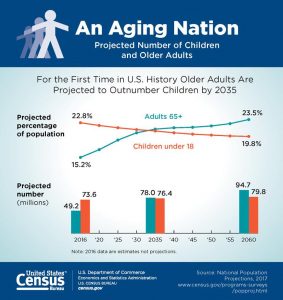
Our Concept of and Descriptions of Aging Over Time
The Old Testament describes King David’s death: “. . . and he died at a good old age, full of dogs, riches and honor”. Among ancient Hebrews, “The wisdom of our fathers,” which was written sometime after the birth of Christ states that if one reaches the age of 80, it is a story of survival. In contrast, if one reaches the age of 90, one is frail and “bending over the grave”.
Among Greek philosophers, Plato sees successful aging through spirituality. He wrote: “The spiritual eyesight improves as the physical eyesight declines”. The Romans honor and even idealize old age. Cicero claimed: “Old age, especially an honored old age, has so great authority that this is of more value than all the pleasures of youth.”
In Shakespeare’s play As You Like It,he portrays a very negative picture of aging: “last scene of all, that ends this strange eventful history, is second childishness and mere oblivion, sans teeth, sans eyes, sans everything” This dim medieval view speaks to the lack of prospects for successful aging.
Johann Wolfgang von Goethe sees aging thus: “youth is drunkenness without wine; if old age can drink itself back to youth, that is a wonderful virtue.” Yet he also says, “So lively brisk old fellow don’t let age get you down. White hairs or not you can still be a lover”
Historian Will Durant of the 20th century observed, “The individual succumbs but he does not die if he has left something to mankind.” To acknowledge an appreciation of the very subjective aspects of successful aging, we only need to consider Bernard Baruch’s view: “To me old age is always 15 years older than I am”
It would accurate to say that for the most part in Western society, aging is viewed in a negative way, where somehow older people are viewed as less than able and capable, and to some degree helpless. Which can account for how older people can be made the object of ridicule or humor, or at a minimum, a nuisance to be tolerated but out of sight.
Myths about aging are perpetuated by our media. The movie, Cocoon, a movie about older people, starred Don Ameche, Hume Cronyn, Jessica Tandy, who were all over the age of 70 at the time tried to deal with the issue of aging. When the film’s director, Ron Howard, reviewed the film’s early takes, he decided something was wrong. His actors weren’t acting like old people—their posture was too straight, step to lively, and speech too clear. So Howard hired acting instructors to teach them how to act like much older, less able people.
Aging is no longer viewed as a natural stage of life, but a horror and devastating progression. Why are we as a human race so set on reversing the inevitable? The war on aging is on, but has our America’s obsession gone too far? The statistics show that more and more women are getting facelifts, and they also show that women are becoming interested in the procedure at a younger age. Women are now getting facelifts even as young as in their thirties. According to a report by the American Society of Plastic Surgeons, procedures such as plastic surgery, Botox and wrinkle fillers are up 100% percent since 2000.
Yet, and this is important, most of the studies of aging have focused on the 5% who are sick or diseased. Actually we have very few studies about physically and mentally healthy aging adults. Biogerentology, the biology of aging, is a science that is only 50 years old. One of the problems of our view of aging is our medical model which focuses on sickness instead of health. In contrast, the new advances in mind-body connection and neuroscience research show great promise in helping people with aging and maintaining good health.
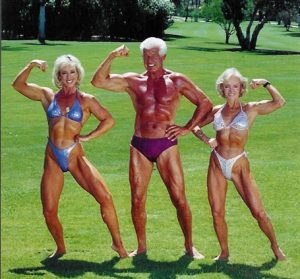
The term “successful aging” has been used in the gerontological literature to cover processes of aging throughout the life span It implies positive aging processes for some while provoking criticisms of failing to be either not comprehensive enough or too far-reaching for others The term “successful aging” suggests “key ideas such as life satisfaction, longevity, freedom from disability, mastery and growth, active engagement with life, and independence” Sometimes successful aging has been called “vital aging” or “active aging” or “productive aging” with the implication that later life can be a time of sustained health and vitality where older people contribute to society rather than merely a time of ill health and. The emphasis for many may be on maintaining positive functioning as long as possible but others have suggested that successful aging can also be discussed under more adverse health conditions.
The “Silver Tsunami”
Unfortunately, our view of aging is reflected in the language associated with older people, including the term “Silver Tsunami.”
The Silver Tsunami (also known as Grey Tsunami, Gray Tsunami, Silver Wave, Gray Wave, or Grey Wave) is a metaphor used to describe population aging. The silver tsunami metaphor has been used in popular media and in scholarly literature to refer to the late-twentieth century demographic phenomenon of population aging in major media platforms including The Economist, Forbes.com, and multiple news outlets. The phrase has also been used to refer more specifically to health and economic implications associated with population aging by major medical publications including The British Medical Journal, New England Journal of Medicine, and professional organizations including American Psychological Association.
Scholars from a range of disciplines including humanities, health professions, and social science have argued that the silver tsunami does not constitute neutral language to describe population aging, calling it “dangerous” and “a nasty metaphor for older adults”.
Critics of the silver tsunami phrase (and its variants) have argued that it represents an important example of ageist language. For example, Andrea Charise writes that the prevalent use of this metaphor in popular and professional media “testifies to the barely conscious figurative language that serves to construct perceptions of an aging population.”
“The Winter 2010 President’s Message from the Canadian Institutes of Health Research begins by invoking “the ‘grey tsunami’—the tide of chronic diseases rising from an ageing population which threatens to swamp our health-care system, economy, and quality of life.” Similarly, in 2010 the Alzheimer Society of Canada published a major commissioned report on the projected impact of dementia entitled “Rising Tide.” This ominous rhetoric of rising, swamping, tides, and disease—amplified by the authoritative tones of medical and health policy expertise—conceives of population aging as an imminent catastrophe”
In a 2013 editorial in the Journal of Gerontological Social Work entitled “The Aging Tsunami: Time for a New Metaphor?”, Amanda Barusch builds on this objection, by describing the “inaccurate, damaging perceptions” of older age. “The specter of millions of dependent elders sweeping over the land makes us shiver.”
In a content analysis (2009) of The Economist’s digital archive between 1997 and 2008, Ruth Martin, Caroline Williams, and Desmond O’Neill conclude that “There is a noticeable trend to ageism in one of the most influential economic and political magazines in the world. “In place of the silver tsunami’s “apocalyptic” imagery, critics have suggested abandoning the metaphor in favor of different, and ideally more neutral, terminology with less overtly ageist connotations. “Geriatricians and gerontologists who want to influence policy makers to improve services for older people will need to engage in a dialogue with journalists in areas other than the biomedical literature.”
Increased Demand for Services and Support Specifically for Seniors
In an article in Canada’s Globe and Mail, Jeffrey Simpson cited data from the federal government that cites the current average life expectancy for women is 82.5 years, and for men 79 years and predicts that by 2030 it will be for women will be 87 years and for men 82.8 years. In the 1960s, the average for women was 77 and for men 73. From the 1960s to 2030s, the life expectancy rose by almost a decade. Roughly speaking, the average age has been rising by one year every decade.
The good news, Simpson says, is that more people will live longer – and in reasonable health – than ever. According to the OECD, a whopping 85 per cent of Canadians over 65 report themselves to be in good health, the second-highest share for any country.
Are Canada’s pensions and retirement plans prepared for this? Is the work force and workplace? Are government finances?
Simpson argues, “with an aging society comes slower economic growth, because fewer people will be working, earning income, and more people will need government programs.” The Federal Department of Finance states: “Slower nominal GDP growth will reduce the growth rate of government revenues, thereby limiting the capacity of governments to continue to finance growth in public expenditures as high as in the past. At the same time, population aging is expected to put upward pressure on public expenditures, notably for age-related programs such as elderly benefits and health care.”
The financial implications are even more serious in the United States, where its medical and health system is far more expensive and currently in chaos.
With the increase in population, there will be an increase in demand and the senior living industry will have to expand to meet that demand. Expect to see senior living communities popping up all over the country – not just in typical retirement states like Florida and Arizona. Many seniors are moving away from these states and halfway back to their home states, even inventing a new retirement term, “halfbacks.” As the demand for senior living increases, senior communities will rise in rural and urban settings alike.
Not only will there be more senior living options, but they will look a little different. Today’s baby boomers expect more when it comes to senior living and senior care. They want accessibility and convenience partnered with unmatched care and amenities. The future of senior living is not institutional. It’s vibrant and active, encouraging and empowering – reflecting a generation that has changed their nation.
As demand for senior living grows and the boomer generation raises the standard on senior living, we can expect to see more options and personalized care. From concierge services to transportation and even customized care offerings, senior living in the future will continue to move away from institutional care toward a true sense of home and community.
Of primary importance for the aging will be the issue of appropriate medical and support care. As the number of senior people rises in many economies of the world, the need for long-term care and aging-in-place services will increase. This will escalate the burden on healthcare in many countries. There are some interesting models that are arising to meet the needs of this population. Many of these models are experiments, but they are proving to be highly successful in providing care, reducing cost and improving quality of life to this silver community.
As people live longer, there will be a sharp increase in the number of people with dementias, such as Alzheimer’s disease (AD). In fact, 25% to 30% of people aged 85 and older have a high level of cognitive decline. Globally there are an estimated 47.5 million dementia sufferers, and the number is expected to increase to 75.6 million by 2030 and 135.5 million by 2050. European countries with significant prevalence of dementia are Germany (1.9%) and Italy (2.09%). AD is the most common form of dementia, affecting an estimated 5 million people older than 65 in the U.S.
Countries like Japan are struggling to move from hospital-centered medical care to community-oriented medical care. With declining birth rates and an increasing elderly population (people aged ≥65 years reached 25% in 2013 and is expected to exceed 30% in 2025 and 39.9% in 2060), Japan has invested heavily in robotics and is one of the first countries to be ready with products or prototypes in 2015. South Korea, the U.K., Germany, and China are closely behind in terms of manufacturing. These robots are ready to become part of the household soon. The question is, are seniors ready to share their house with a robot?
The nursing robot, “Robear,” is an experimental nursing-care robot developed by the RIKEN-SRK Collaboration Center for Human-Interactive Robot Research and Sumitomo Riko Company. It can work as a nursing robot and can perform tasks like lifting patients from wheelchairs. Robear can become an alternative for nurses in care homes and independent homes. Currently, nursing homes are struggling with manpower shortage. These robots can help seniors manage their day-to-day activities in their own homes. Another example is Care Robot or “ChihiraAico” robot, which resembles a Japanese woman and is likely to be used to assist elderly people with conditions, like dementia, by connecting them to medical staff.
Robo Chef has been programmed to assemble and chop ingredients, using the stove or oven to cook, and later can also finish up by cleaning the dirty dishes. The Robo Chef is expected to enter the market between 2017 and 2018 at a cost of $10,967 and can become a great support for elders living in their homes and who are unable to do some household chores.
If Transformers from the movie can become a reality, then Giraffplus would definitely be one of them. These remote-controlled bots can connect elderly patients with their friends and family, as well as facilitate a virtual visit. At the same time, it comes with sensors outfitted around the home tracking where someone is and what they’re doing. These robots can transform into their social friends by connecting them with their loved ones through the Internet.
A Melbourne nursing home is using robots to interact and play games with residents, as well as improve the quality of life of patients with dementia. Baby seal Palro, expected to be priced at $8,600, is an interactive model developed in Japan. This robot already passed a successful trial in 2014. With the U.S. moving toward becoming a super-aged nation, will Americans be open to adopting Palro? SoftBank’s Pepper has got its work visa and also would be available for service in the commercial market. Who is next?
The shrinking oldest-old support ratio is raising a lot of concerns at the highest level in terms of policy and also on the ground–people are asking “Who’s going to be taking care of grandma or grandpa?”. There are ongoing discussions and research about different models of care, and I don’t think we have any easy solutions at this time. Clearly there’s a lot of research and interest in trying to improve active life expectancy. The goal is not necessarily to increase longevity, but to increase independent function until as late in life as possible so that the person only needs hands-on care for a very short period of time prior to their death.
The U.S. federal social security system unctions through the taxation of large numbers of young workers, in order to support smaller numbers of older dependents. A diminishing workforce, coupled with growing numbers of longer-living elderly can deplete the social security system. The Social Security Administration estimates that the old age dependency ratio (people ages 65+ divided by people ages 20–64) in 2080 will be over 40%, compared to the 20% old age dependency ratio in 2005.Increasing life expectancies of the older population will not only result in decreases in Social Security Benefits, but also devalues private and public pension programs. The death of funds supplying programs such as social security and Medicare may be a contributing factor for adults to delay retirement and to continue working.
Some Myths About Aging
- Myth 1: A significant % of older people are either senile or suffer from dementia. Fact: Only 6-8% of people over the age of 65 have dementia;
- Myth 2: Older people suffer from rigid thinking. Fact: 41% of people over 65 use the Internet. Brain science shows we can learn easily well into our 90’s.
- Myth 3: Most older people have health problems. Facts: 75% of people aged 65-74 are in good health; over 60% age 75+ are in good health; 40% over age 80 are fully functional.
- Myth 4: Sexual activity declines significantly with aging: Facts: A recent study showed that 93% of people are sexually active in their 50’s; 81% in their 60’s and 75% in their 70’s.
- Myth 5: Older people exhibit significant cognitive decline. Fact: A recent study showed that in terms of verbal meaning, inductive reasoning, spatial orientation, numerical ability and word fluency the people studied 50-80 did not show any significant decline
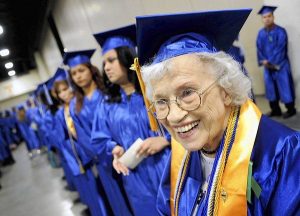
Advantages of Older Workers in the Workplace
Older workers—or “perennials,” as this cohort has sometimes been called—are now the fastest-growing population of workers, with twice as many seniors as teenagers currently employed in the US.
In the 30-year span from 1994 to 2024, workers aged 55 and older will go from being the smallest segment of the US working population to the largest, according to the US Bureau of Labor Statistics. Other industrialized nations are seeing similar trends; in Japan and South Korea, the workforce is aging even faster.
The aging of the workforce is in part driven by employees who want to keep working—or at least, to keep earning—well into their 70s and even 80s.
Increased life expectancy across the industrialized world means that more people have more years of healthy life than ever before. Women who deferred careers while raising children may only be hitting their professional stride in their later 50s; men and women who spent decades in engaging roles may be reluctant to abandon the social and intellectual stimulation of work for decades of leisure time.
Meanwhile, the corporate shift from defined-benefit retirement plans, which guaranteed a steady income, to defined-contribution plans, which place the onus of saving on workers, has left many older people financially unable to quit work without a substantial drop in their standard of living.
Nearly half of current retirees surveyed in 2014 said they were still doing some paid work in retirement. But even the subset of these workers who are continuing to work past retirement out of choice rather than necessity often desire some kind of transition by the time they reach their mid-60s. That may mean part-time work, to allow for more free time with family, or less time at a job that’s become more physically taxing, or flexibility to accommodate other lifestyle changes.
Employers are seeing returns, too. As age diversity on work teams goes up, so does productivity and performance. Research from the Milken Institute’s Center for the Future of Aging and the Stanford Center on Longevity found that older employees took fewer sick days, showed stronger problem-solving skills, and were more likely to be highly satisfied at work than younger colleagues.
There exists a “gray ceiling” image—characterized by burnout, obsolescence, and career plateauing—that keeps many aging workers from reaching their potential. In the workplace, there is an clear age bias where recruiters favor younger applicants. You have only 5 years when most people are free of age bias—35-40. Otherwise, often you are viewed as either too young or too old.
Studies of older workers in the workplace have shown that older workers engage in less unethical and/or criminal activity; have higher levels of participation in politics and volunteerism; have fewer workplace accidents; have better visual acuity; have less conflict with co-workers; have fewer power struggles; are less ego driven; have less health costs than younger workers; have greater loyalty to the organization; have more positive attitudes than younger workers; are more resilient under stress; do better quality work; have less job turnover; are more trainable and have a less net cost compared to younger workers.
Some of the world’s great achievements were accomplished by older people, not the youngest geniuses: It was during their “sunset strolls,” that Michelangelo, at 88,was designing the dome of St. Peter’s Basilica; Stradivarius, in his 90’s produced two of his most famous violins; Verdi, when 80, composed the opera “Falstaff;” Mary Baker Eddy founded the Christian Science Monitor at 87; Frank Lloyd Wright was 91 when he designed the Guggenheim Museum; Peter Drucker wrote, his famous book on management when he was 89; George Burns was still performing in his 90’s; Dr. Seuss was 82 when he wrote one of his last children’s books; Olive Riley, who was believed to be the world’s oldest blogger at 108, wrote a blog every day; Arthur Winston, 100, worked for 72 years for the same company, Los Angles Metro; Jennifer Figge, 57 was the first woman to swim the Atlantic Ocean; John Whittemore, 104, continued to compete in Track and Field; and John Kelly was still competing in Marathon and Iron man competitions at 97.
We also commonly think of older people as being poor and penniless. But the current senior population possesses over $900 billion in spending money. Nearly a quarter of householders aged 65 to 69 have a net worth of $250,000 or more. Seniors spend more than $30 billion on travel each year. According to George Moschis of the Center for Mature Consumer Studies, “the 55-plus age group controls more than three-fourths of this country’s wealth and the 65-plus group has twice as much per capita income as the average baby boomer.”
The question of legislating non-retirement
In Hong Kong, Retired Not Out is a recruiting company that connects companies and retired professionals through part-time jobs, consulting, teaching and volunteer services. Founder Priyanka Gothi established the firm when her retired mother was looking for a suitable part-time job but could not find anything fulfilling.
Gothi’s aim is to connect white-collar retirees with the types of jobs “that would make the most of their skills and experience”. She believes that by providing suitable opportunities, the experience and skills of older workers will have a considerable, positive impact on the economy and society.
Dorothy Leonard, professor of business administration, emerita, Harvard Business School and co-author of Deep Smarts: How to Cultivate and Transfer Enduring Business Wisdom, suggests companies focus on recreating tacit knowledge – experience, anecdotes and creative solutions – in the workplace.
For example, if an experienced CPA is planning to retire, the firm where they work should allocate a younger accountant to work with them. Leanne Cutcher, professor of management and organization studies University of Sydney Business School, agrees: “External mentoring is valuable but it’s after the horse has bolted. Knowledge is useful in context.”
The “Silver Dollar”
Rather than seeing seniors as draining the economy, a report by Bank of America and Merrill Lynch published June 6, 2014 suggests that the longevity economy has three places for investors wishing to play the ”silver dollar” theme:
- Pharma & Healthcare (including tackling age-related diseases and conditions such as cancer, cardiovascular disease (CVD), Alzheimer’s disease (AD), Parkinson’s disease, diabetes, osteoporosis and osteoarthritis, as well as medical devices, hearing aids, orthopedic appliances, dental and vision care, and incontinence).
- Financials (including insurance, asset and wealth management).
- Consumer (including senior living, care, managed care, healthcare real estate investment trusts (REITs), aging in place, death care, pharmacies and drug stores, anti-aging, travel and leisure, retail, VMS, and technology).
Consumers in the Longevity Economy
According to the report, the Longevity Economy published September 2016 by the AARP, the longer seniors age 50+ remain in the workforce, the more money they have to spend and 83% of US household wealth is held by people over age 50. Access to credit and assets allows this group to spend more on goods, services and investments than the younger population. In turn, this spending by people age 50 and over in turn leads to the creation of more jobs.
The Longevity Economy and the Workforce
Americans age 50 and over who remain in the workforce tend to be more educated than younger people in the workforce. About 19 percent of employed workers over age 65 have a graduate degree, compared with about 13.5 percent of employed workers under 65. This higher level of education plus the fact that the work by older Americans is less physically demanding allows those over age 50 to remain longer in the workforce.
Over the last 10 years people ages 55-64 made up the highest rate of entrepreneurs in the United States and one in three new businesses was started by an entrepreneur age 50 or more.
The Longevity Economy and Philanthropy
Baby Boomers and those age 50 and over give a lot of philanthropic, charitable and volunteer contributions. Those over age 65 were found to donate the largest amount averaging $1672 a month. This also pays off for them health-wise, as research has shown that people who do volunteer work and donate to charitable causes have a lower rate of depression, blood pressure and death.
What can be done about it?
In a recent article published in The Elder Law Journal, Sharona Hoffman, the Edgar A. Hahn Professor of Law at the Case Western Reserve University School of Law, urges policymakers to focus on the elderly population. “Everyone ages, and everyone has aging loved ones, so this is a personal issue for most of us, even if we don’t want to think about it,” she states.
“In 2016 voters listed terrorism as their first and most serious national concern, but only 80 Americans were killed in terrorist attacks between 2004 and 2013, while millions of individuals faced grave difficulties related to aging,” said Hoffman, author of Aging with a Plan: How a Little Thought Today Can Vastly Improve Your Tomorrow.
Next steps
Hoffman offered five specific suggestions to improve conditions for seniors as their numbers continue to increase:
- Advocacy organizations and the media should educate the public and policy-makers about the challenges the elderly face and strive to make them a political priority.
- Long-term care (home care from aides, assisted living, and nursing homes) must become more accessible and affordable. This could be achieved through long-term care insurance that is subsidized by the government.
- The working conditions of professional caregivers must be significantly improved. Consider wage increases, health benefits and paid sick days.
- Affordable transportation options should be available to the elderly so they don’t lose their independence if and when they stop driving.
- Incentives, such as loan forgiveness programs and higher Medicare payments, should be offered to prospective health-care professionals as encouragement to enter the geriatric field.
Challenges for the Workplace to Resolve
Since 1998, the US has seen employment rise by 22 million to reach historical highs. The main cause of this increase isn’t the dynamism of Silicon Valley or the entrepreneurial energy of Brooklyn hipsters. The vast majority (90%) of this increase is due to higher employment for workers aged 55 and above.
One specific barrier to older employment that receives much attention is corporate age discrimination. Older workers report frequent prejudice in terms of pay, promotion, training and recruitment. As the research of David Neumark of University California Irvine shows, workers over 60 who put their age on their CV have their probability of being called for interview.
Businesses do not consider aging people a viable demographic market, community organizations labeled them recipients rather than contributors, and when they were included in commercials, movies or news segments, they are portrayed as unhealthy, unproductive and uninvolved: a burden on the economy and the younger generations.
In “The Big Shift: Navigating the New Stage Beyond Midlife”, Marc Freedman argues that we need a “new map of life” to deal with this powerful demographic change. Mr. Freedman is founder and chief executive of Civic Ventures, a nonprofit research group focused on boomers. He points out that while medical science, improved nutrition and other advances have succeeded in extending our lives, our ability to redefine these longer lives has lagged woefully behind. Freedman wants to broaden the way that people think about this part of life, which he calls the “encore stage.” The encore stage is not about “clinging to our lost youth,” he says. Rather, it means using one’s evolving identity and experience in ways that are characterized by “purpose, contribution and commitment, particularly to the well-being of future generations.”
If people live 85 years or longer, does it make sense to put so much pressure on people in their 20s and early 30s to complete their education, form a family, and start a career? A new view of age-related goals and activities may be more sensible.
Ellen Galinsky, President and Co-Founder of the Families and Work Institute says that companies need to recreate work places that are multigenerational and that will require rethinking how work is organized, including more flexible work-life arrangements.
One of the critical issues we face in the potential loss of aging workers from the workplace to retirement is the loss of knowledge. A 2006 Ernst and Young study report that companies are more likely to be concerned about knowledge loss and transfer, but they are doing little about it.
A senior nuclear weapons designer retired from the Los Alamos National Laboratory after 30 years, leaving no one in the Lab who knows the design of missiles built in the 1950’s and 60’s, which are still deployed in military bases worldwide. A chemist who invented a new polymer retires and soon afterward his company loses the ability to fix variations in quality manufacturing. A senior sales executive departs from their company with years of detailed relationships with decision-makers and client organizations, which is never recovered with the new sales executives, and business declines by 30%. When a petrochemical explosion occurred at a large plan on the Texas Gulf Coast, an investigation found that the engineers there at the time had all been on the job less than one year.
After Boeing offered early retirement to 9,000 senior employees during a business turndown, a subsequent new rush of order for 737’s threw the assembly line into chaos with all the new employees they hired. They had to finally shut down the assembly line and lost $1.6 billion in lost orders from customers. More than $24 billion, with 400,00 working on it was invested by NASA over 10 years to make a moon landing. So why haven’t we gone back to the moon? Budgetary constraints and a focus on the Space Station and Shuttles. It’s not that the new $50 billion plus price tag of returning the moon is a deterrent. It’s that NASA has lost the knowledge of how to do it. Most of the scientists who developed the technology have retired or are dead and were never replaced.
Often, mature workers are left on their own as they near the end of their careers. Most organizations have no career development or professional growth plans for mature workers. A Manpower survey found that just 28% of U.S. companies and 21% of companies worldwide have a strategy for retaining mature workers. A study by the Conference Board showed that 80% of HR executives surveyed were oblivious to the concerns of older workers. An international study by Manpower showed that just 18% of U.S. employers have a strategy to recruit mature employees; Canada 17%; whereas Hong Kong 25% and Singapore, 48%.
There are some organizations doing something about the issue. Companies in Finland, where aging workers is a more significant issue, are taking action. For example, the Abloy lock company, which operates in 40 countries, has 30% of its workers over the age of 55. They have created the designation of Agemaster for these employees, and they are entitled to an assortment of benefits—massages, free memberships in health clubs, free education, all funded by the company, free complete physical exams and fitness tests, and an annual 5 week vacation. And the creation of a mentoring program where all mature workers pass on their knowledge to younger workers before they leave. Finland, which already is facing an aging workforce, has initiated the National Program on Ageing Workers, a 4 year campaign to change public attitudes. The core of that program is the view that work should be adapted to the abilities of aging workers, rather than the other way around.
Westpac Banking Corporation of Australia and New Zealand, recognized for its commitment to corporate social responsibly made it commitment to attract mature workers. They have increased their average age of 45 of their workforce from 20% to 30% in just 5 years. They have found that absenteeism for mature workers is actually lower than for younger employees. They have also found a larger percentage of mature employees were rated as outstanding or above average in their work compared to employees younger than 45.
At a BMW factory in Germany, management realized workers were getting older. They estimated their employees would soon average age 47. BMW did not want to either force workers out, and many wanted to continue to work. They asked workers how could they make things better for them. Workers complained of sore feet from standing, so they made special shoes for them, and put in wooden floors instead of concrete, some got chairs, like a hairdresser. They adjusted work schedules to allow for stretching and relaxing; Tools and computer screens were changed to adapt to age. The entire project only cost BMW $50,000, and productivity and job satisfaction went up.
A study of top companies in Canada, as reported in the Globe and Mail, illustrated strategies they used to retain older employees, including: Additional vacation time up to 6 weeks; free training and tuition programs; phased in retirement; physical fitness and wellness centers on site; and academic scholarships for children and grandchildren.
According to Project Equity, many small business owners do not have succession plans–and because of this they’re putting their employees at risk. As a small business owner I empathize–we tend not to think ahead. This leaves us with fewer choices when it comes time to retire. Without succession planning, many of these businesses “will just quietly close down and go away,” says Project Equity’s co-founder Alison Lingane.

Summary
We need a new kind of clock: an Ulyssean model in which the later years are viewed as a time of wisdom, creativity, power and purpose. We need to make a distinction among job, career and life calling. For people who are aging, calling is far more important. We need to be more concerned with wisdom, and less concerned with cognition. Look at the state of the world now, and what cognition has brought us without wisdom. It is wisdom, a strength of aging people, encompasses discretion, maturity, keenness of intellect, broad experience, profound thought, compassion and understanding and implies a moral nature. Wisdom is what and who you are, and not what you do.
It’s time that employers and executives woke up the fact that we will need aging workers to sustain the economy. Government and workplace policies that recognize and prepare for these demographic changes need to be at the top of the agenda.
Copyright: Neither this article or a portion thereof may be reproduced in any print or media format without the express permission of the author.
Be sure to read more two latest books:
- I Know Myself And Neither Do You: Why Charisma, Confidence and Pedigree Won’t Take You Where You Want To Go, available in paperback and ebook formats on Amazon and Barnes and Noble world-wide.
- Eye of the Storm: How Mindful Leaders Can Transform Chaotic Workplaces, available in paperback and Kindle on Amazon and Barnes & Noble world-wide..

